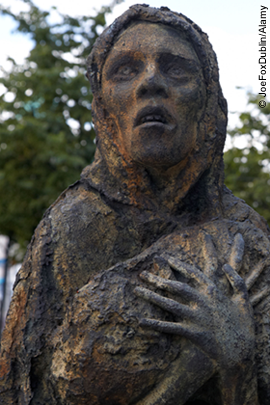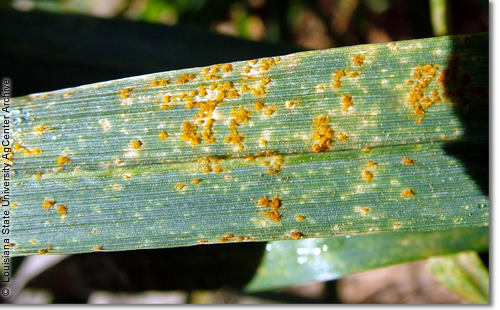 |
| This statue is part of the Famine Memorial in Dublin, Ireland. |
Just like people, crops can become sick or diseased. Crop diseases are caused by different factors, including the weather and temperature, pollution, and parasites, such as fungi, bacteria, and viruses. It can be hard to cure a crop once it has been diseased, especially if you don’t have the right tools. So if a country depends on one crop as their main source of food, a famine can occur.
This happened in Ireland during the Irish Potato Famine (1845–1849). Potatoes were the main source of food for many Irish families. In 1845, potato farmers began to spot a white growth (a fungus) on the leaves of the potato plants. When farmers dug up the potatoes, they found that the potatoes were small and wrinkled. Potato crops all across Ireland were destroyed by the white fungus, and millions of people died.
FACT: Wheat rust is an old crop disease that is making a comeback in Africa.
 What is wheat rust?
What is wheat rust?